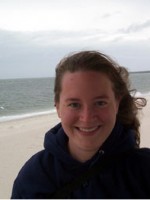Research Interests
- Community ecology
- Pollinators
- Marine conservation
- Human interactions with wildlife
- Conservation education
Education
- PhD, The Pennsylvania State University
- BS, Cornell University
Experience
Stephanie Lessard-Pilon teaches undergraduate courses in Conservation Studies for the Smithsonian-Mason School of Conservation (SMSC). She holds a B.S. in Biology with a concentration in Ecology and Evolutionary Biology from Cornell University, as well as a PhD from Penn State University in Ecology. Her area of interest and study is community ecology, and she has worked in a wide range of ecological systems, from East Coast forests and streams to deep sea environments. She is particularly interested in the role of species interactions, including biologically-mediated disturbance and facilitation, on the structure and function of ecosystems. Past projects have included work on the impacts of the Deepwater Horizon oil spill on fauna in sediments near corals, as well as exploratory research on deepwater coral and seep communities in the Gulf of Mexico. She is an avid beekeeper, and manages the SMSC apiary, which teaches students about honey bees and the ecology and conservation of pollinators. Stephanie is passionate about improving conservation education, engaging with diverse audiences about conservation-related issues, and empowering the public to take conservation action. Outside of class, you can find her hiking, trail running, cooking delicious food or growing plants.
Selected Publications
Lessard-Pilon, S., Smith, C. 2011. Practical Applications of Biodiversity, Climate Change and Sustainability: Student Lab Manual. 102 pages.
Lessard-Pilon, S., Gollner, S., Bright, M., Fisher, C.R. Urchin bioturbation mediates sediment infauna community ecology: An ecosystem engineer in the deep sea. In prep for submission to the Journal of Experimental Marine Biology and Ecology.
Lessard-Pilon, S., Porter, M.*, Cordes E., MacDonald, I., Fisher C.R. 2010. Community composition and temporal change at deep Gulf of Mexico cold seeps. Deep-Sea Research II doi:10.1016/j.dsr2.2010.05.012
Lessard-Pilon, S. A., Podowski, E. L., Cordes, E. E., Fisher, C.R. 2010. Megafauna community composition associated with Lophelia pertusa colonies in the Gulf of Mexico. Deep Sea Research II doi:10.1016/j.dsr2.2010.05.013.
Cordes, E.E., McGinley, M.P., Podowski, E.L., Becker, Lessard-Pilon, S. A.,, Viada, S., Fisher, C.R. 2008. Coral communities of the deep Gulf of Mexico. Deep Sea Research I 55:777-787.
Roberts, H. H., Fisher, C.R., Bernard, R., Brooks, J.M., Bright, M,, Carney, R.S., Cordes, E.E., Hourdez, S., Hunt, J.L., Joye, S.R., MacDonald, I.R., Morrison, C., Nelson, K., Samarkin, V., Shedd, B., Becker, E., Bernier, M., Boland, G., Bowles, M., Goehring, L., Kupchik, M., Lessard-Pilon, S. A.,, Niemann, H., Petersen, C., Potter, J., and Telesnicki, G. 2007. ALVIN Explores the Deep Northern Gulf of Mexico Slope. EOS, Trans. Am. Geophys. U. 88: 341-342.
Courses Taught
- CONS 401: Conservation Theory
- CONS 402: Applied Conservation
- CONS 410: Human dimensions of Conservation
- CONS 490: Integrated Conservation Strategies
- CONS 403: Ecology for Conservation Theory
- CONS 404: Monitoring and Assessment of Biodiversity
- CONS 491: Comprehensive Conservation Planning
- CONS 320: Conservation in Practice
- CONS 100: Introduction to Field Conservation Ecology


